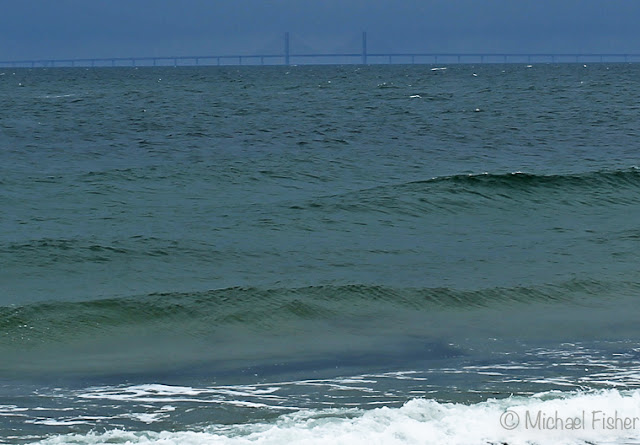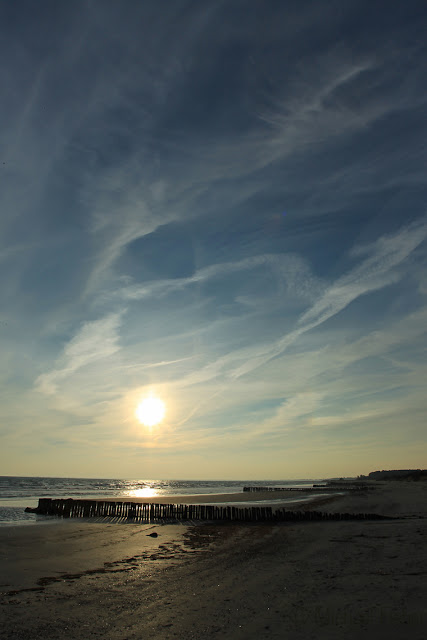We had come to the end of our journey through Sweden. We decided to visit Ale's Ale'sat Kåsehuvud, high above the tiny fishing harbour of Kåseberga. A piercing ice-cold wind greeted us, like pins hitting the face; it had not been the best day for a visit. Scarfs wrapped around our faces, offering a little relief from the cold; we had joined the few stalwart visitors trekking upwards along the cliff. Strands of Eider ducks, flying below us, still passing North, ever following the coast,
to their nesting habitats, Hooded crows blew past on the wind,
like tattered black paper!
to their nesting habitats, Hooded crows blew past on the wind,
like tattered black paper!
Ale's St. (Ales stenar) in Swedish is the site of Sweden's stone ship a mass of 59 massive boulders, 1.8 tonnes each in weight, forming the shape of a boat some 67 metres long and 19 metres wide.
Looking towards the bow of this ship of stones and the Baltic Sea, it was mentioned in land reports as early as 1515 and drawn on coastal charts as a bearing from 1684. It was plainly a landmark even back then.
The charcoal found around the ship has been dated, which gives a clue as to when it was erected, probably around 1400 years ago, at the end of the Nordic Iron Age.
A Hooded crow attempting to fly.
Spring has been approaching, and wildflowers enjoy sheltered positions and dappled sunlight along the coastal path—although it has not felt like it!
Coltsfoot peeping through.
Further along the coast, Greylag Geese head North.
The Tufted duck rested awhile, but then they were off again!
Goldeneye ducks passed over; everybody was heading North whilst we were going South again.
The last night stop in Sweden was Skanör Falsterbo.
The Øresund Bridge linking Sweden to Denmark is just visible across the sea. We returned over it the following morning.
A welcome sight as we walked around the small harbour was a Velvet Scooter.
We have seen thousands of Eider ducks on this journey; they are so photogenic!
At Odense in Denmark, we turned South, heading across Fyn and onto the Island of Langeland. It sits between the Great Belt, Denmark'Denmark's strait connecting the Baltic Sea, and the bay of Keil.
By mid-afternoon, we were looking out over the splendid Tranekær Slot, a Royal residence on Langeland since 1231.
Growing on a roadside, Butterbur, also known as bog Rhubarb or Devil's hat.
Driving to our night stop along the coast at Emmerbølle Strand, we watched this male Marsh Harrier skimming the reeds while hunting for prey.
We visited the nature reserve at Botofte, close to Tranekær Slot, the following day.
Sadly, the weather turned bad during the night, and the morning brought more heavy rain. The first sighting at the reserve was a beautiful Red-Necked Grebe.
Later, in awful weather, we could watch three pairs of the Red Necked Grebes building their nests.
We left the Grebe's Grebe'seir nest building for better weather.
Klintholm Haven is a small fishing harbour on Denmark's South coast of Møn. The harbour was constructed in 1878 by the owner of the nearby Klintholme estate and used for exporting the local chalk.
Taking a walk along the wild beach, which we had all to ourselves, we were lucky to see three Roe deer. The reeds told the time of day as the sun started to set.
The sun setting over the Møns coastline.
Two Shelduck fly along the coast as we did the following day, passing into Germany.
























No comments:
Post a Comment